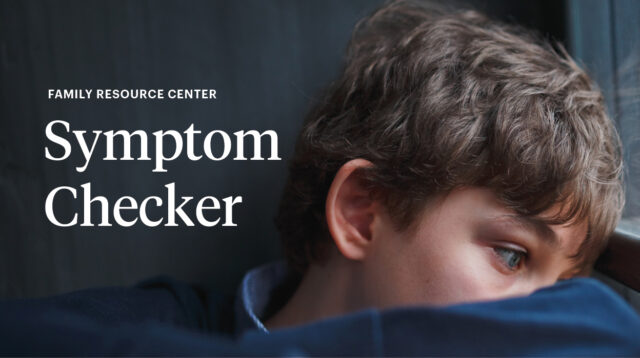There are lots of myths about ADHD. One is that if a child isn’t hyperactive, they can’t have ADHD. This is untrue. Some kids with ADHD have “inattentive presentation.” Another myth is that kids grow out of ADHD.
Common ADHD Myths
Common ADHD Myths
ADHD is often misunderstood, and outdated ideas about the disorder can keep kids from getting the support they need
Clinical Expert: Caroline Mendel, PsyD
en EspañolWhat You'll Learn
- What are the presentations or subtypes of ADHD?
- What can parents do to help their child manage ADHD?
- What are common myths about ADHD?
Quick Read
ADHD is common in kids, but there are a lot of misunderstandings about the disorder.
Attention-deficit hyperactivity disorder can be a deceiving name. Kids with ADHD don’t have a deficit of attention but rather a hard time directing their attention to things that don’t feel rewarding, like homework.
Similarly, despite the name, not all kids with ADHD are hyperactive.
Some kids with ADHD have what’s called the inattentive presentation. Kids in this group get easily distracted and have trouble sustaining focus, but they aren’t hyperactive. They often fly under the radar because their symptoms aren’t as noticeable from the outside. Many girls with ADHD have the inattentive presentation.
Another common misunderstanding is that kids grow out of ADHD. While ADHD can change over time, experts recommend seeking treatment early so that kids learn the skills to manage their symptoms.
A popular treatment for ADHD is stimulant medication. Some people think that taking it as a child for ADHD, which doesn’t lead to getting high, could be a gateway to substance abuse later in life. But many studies have disproven that. ADHD does increase the risk of drug abuse, but that’s because of the disorder itself, not the medications used to treat it.
It’s true that ADHD medication can make a child feel sedated or moody, but that’s not the case with most kids. If side effects occur, switching the specific medication, formula, or dose can help.
Full Article
13 min read
It’s increasingly common to hear a child, or an adult, say they have ADHD. But that doesn’t mean the disorder is well understood. There is a lot of misunderstanding about ADHD, stemming from the three areas of difficulty it causes for kids — inattention, hyperactivity, and impulsivity — and the fact that a child doesn’t have to struggle with all three to get an ADHD diagnosis.
Here are some of the most common myths about the disorder.
Kids with ADHD can’t focus on anything for a long time.
Kids are most often diagnosed with ADHD because they have difficulty paying attention in school. And it’s called attention deficit hyperactivity disorder. So, many people assume that these kids can’t concentrate on anything for more than a few minutes. Caroline Mendel, PsyD, a clinical psychologist in the ADHD and Behavior Disorders Center at the Child Mind Institute, dispels this myth often. She hears parents say, for example, that their child can sit and focus on Harry Potter books for long periods of time, so they must not have ADHD.
“But the truth is if it’s something highly reinforcing and engaging for that child, and it’s a preferred activity, they will be able to direct their attention to that task,” Dr. Mendel says.
Despite the disorder’s name, the issue with kids who have ADHD is not actually a deficit of attention but rather a difficulty directing one’s attention to things that are not particularly rewarding to them, including instructions from parents and teachers. In fact, many kids with ADHD experience hyperfocus, paying intense attention to things that are interesting to them.
That’s why being able to put down the video game and engage in math homework can be a struggle for kids with ADHD.
If a child isn’t hyperactive, they can’t have ADHD.
Again, despite the name, not all kids who have ADHD are hyperactive. There are two presentations of ADHD, explains Dr. Mendel.
If a child has the hyperactive-impulsive presentation, their symptoms include being fidgety and extremely active, as if they’re driven by a motor. They also include impulsive behavior –– not thinking before they act. Excessive talking and interrupting, extreme impatience, and trouble playing quietly are all examples of this presentation. This is what a lot of parents think of when they hear ADHD.
But there is also what’s called an inattentive presentation. Children in this group get easily distracted and have difficulty focusing on things that require sustained effort, like homework. Other executive functioning difficulties, like forgetfulness and trouble with organization, also fall under this presentation. Hyperactivity is not a symptom here.
“You can have just the inattentive presentation, just the hyperactive-impulsive presentation, or the combined presentation where you have symptoms in both of those areas,” explains Dr. Mendel.
“I think that is one of the things that people often don’t understand about ADHD. They’ll say, ‘Well, they’re not fidgety,’ or ‘They’re not running around, so I don’t think they have ADHD,'” Dr. Mendel says. “I think the ‘H’ of ADHD can be challenging for some people because not every child with ADHD is hyperactive.”
Only boys have ADHD.
Twice as many boys are diagnosed with ADHD as girls, but that’s in part because fewer girls are hyperactive. And hyperactivity is more visible and disruptive than other ADHD symptoms, especially in younger children.
“Typically, boys are more likely to exhibit those symptoms than girls are,” Dr. Mendel says. “Girls are much more likely to exhibit inattentive presentation.”
Kids who can’t stay in their seats or keep from interrupting the teacher are more noticeable than those who are spacey or zoned out in class. That’s why many experts think girls with the disorder are overlooked, even though they’re struggling in school and often develop self-esteem problems.
Another common symptom in girls that Dr. Mendel sees in her practice is heightened emotional lability. “They have difficulties with inhibiting emotional responses, so they experience feelings in a really big way,” she explains. This can present as seeming overly upset over something that seems small, like the end of screen time.
ADHD is only a problem in childhood, and it will go away.
ADHD does change over time, but that doesn’t mean it disappears. “An adolescent or adult with ADHD may not be getting up out of their seat, but they may feel internally uncomfortable, jittery, or restless,” Dr. Mendel says. The struggle might not be as externally evident.
As kids enter high school, expectations increase. Teens with ADHD can struggle academically, socially, and emotionally. If left untreated, ADHD can lead to impulsive and risky behaviors like drug use and trouble with law enforcement.
About one-third of kids with ADHD will no longer have ADHD symptoms by the time they are adults, Dr. Mendel says. Another one-third will have symptoms of ADHD through adulthood, but they won’t be as impairing as they were in childhood. And nearly one-third will have significant ADHD symptoms throughout life.
But Dr. Mendel doesn’t encourage parents to wait and hope for their child to grow out of their ADHD symptoms. That’s because years of struggling and conflict with teachers and parents can take a serious toll. Recommended treatment includes teaching kids the skills that will help them manage their symptoms all their lives.
“The truth is, they will probably be more likely to succeed if they’re getting new skills earlier on and having ADHD treated earlier on,” Dr. Mendel said.
ADHD is caused by poor parenting.
It’s easy to conclude when a child is impulsive, doesn’t follow instructions, and acts out a lot that they haven’t been taught to behave at home. But ADHD is a neurodevelopmental disorder, and brain imaging shows differences in the way the brain works in kids with the disorder.
Parenting strategies that work with other kids often don’t work with kids who have ADHD, so parents need to adapt. While parenting does not cause ADHD, parents are crucial in helping kids with ADHD learn to manage their behavior.
Parents can clearly express and model what appropriate behavior is and praise their kids for following along. Positive reinforcement is important for building a trusting relationship with parents and in motivating the child to continue the appropriate behaviors.
This proactive structure, often called “scaffolding,” provides external regulation of behavior while the child learns to regulate themselves. Behavioral treatment that involves parents and kids can help children with ADHD manage their symptoms both at home and at school.
“In terms of the behavioral parent training, a lot of it is setting up the home environment and the school environment to better respond to and set the child up for success by giving them tools to manage their ADHD,” Dr. Mendel says.
ADHD and ADD are two different disorders.
Attention deficit disorder, or ADD, is ADHD without “hyperactivity,” and some people use it to describe the inattentive presentation of ADHD. But in fact, the term ADD is an older term that has been replaced with ADHD.
Kids who take stimulant medications for ADHD are at higher risk for addiction.
People can abuse stimulant medication. And some people think that taking it as a child for ADHD, which doesn’t lead to getting high, could be a gateway to substance abuse later in life.
But a host of studies have found that for kids diagnosed with ADHD, taking stimulant medication neither increases nor decreases their risk of addiction to alcohol, nicotine, marijuana, and cocaine.
Unfortunately, kids with ADHD are at a higher risk for substance abuse than other kids. But this is linked to the disorder itself, not the medications used to treat the disorder. Because many kids with ADHD are prone to impulsivity, trouble focusing, and hyperactivity, substances that curb these issues with minimal effort are attractive. The drug can feel like a quick fix to a struggling kid.
And these kids tend to feel the effects of substances more intensely, making them more vulnerable to addiction. So, not addressing and treating ADHD could put a child at greater risk for substance abuse later as they struggle to get a grip on the disorder.
ADHD medication will change your child’s personality.
Stimulant medications for ADHD are sometimes said to make children moody or sedated. But that isn’t the case with most kids. And if it does happen, it means the child is getting the wrong dose or the wrong medication for their needs.
There is no one-size-fits-all medication regimen for ADHD. Children respond differently to the two different groups of stimulant medications and the different release formulas –– the speed with which medication is released into the bloodstream.
When unwanted side effects occur, it’s common to switch medications and formulas.
The dose also matters. For example, if the dosage is too high, the child may begin to seem zombie-like or irritable. If that happens, the medication needs to be adjusted.
But there is a small group of kids with ADHD who do become moody and irritable when they take stimulant medications, even at the lowest effective dose. For these kids, other treatment options, including non-stimulant medications, should be explored.
Frequently Asked Questions
This article was last reviewed or updated on June 30, 2025.
Topics
Stephanie Cornwell
Stephanie Cornwell is a staff writer at the Child Mind Institute. She attended the University of Florida, where she studied … Read Bio
Was this article helpful?
Related Reading
-
 ADHD and Substance Abuse
Why teens with the disorder are at higher risk for addiction
ADHD and Substance Abuse
Why teens with the disorder are at higher risk for addiction
-
 ADHD in Teenagers
How to help kids handle the new challenges and expectations of high school
ADHD in Teenagers
How to help kids handle the new challenges and expectations of high school
-
 How Girls With ADHD Are Different
And the emotional costs of being overlooked
How Girls With ADHD Are Different
And the emotional costs of being overlooked
-
 ADHD Test for Kids and Teens
Our free Symptom Checker can help you determine if your child might have ADHD
ADHD Test for Kids and Teens
Our free Symptom Checker can help you determine if your child might have ADHD
-
 Complete Guide to ADHD
Children with attention-deficit hyperactivity disorder (ADHD) find it unusually difficult to concentrate on tasks, to pay attention, to sit still, and to control impulsive behavior.…
Complete Guide to ADHD
Children with attention-deficit hyperactivity disorder (ADHD) find it unusually difficult to concentrate on tasks, to pay attention, to sit still, and to control impulsive behavior.…
-
 When Parent and Child Both Have ADHD
Treatment for mom or dad may be important for the kids, too
When Parent and Child Both Have ADHD
Treatment for mom or dad may be important for the kids, too
-
 What Is Inattentive ADHD?
Kids don’t have to be hyperactive to have ADHD
What Is Inattentive ADHD?
Kids don’t have to be hyperactive to have ADHD
More Related




